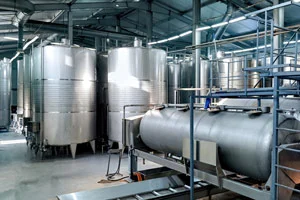The presence of Brettanomyces bruxellensis yeast in wine is one of the biggest problems faced by winemakers. Early detection is essential to prevent the development of microbiological contamination, which has very negative effects. This is why it is important to have a clear understanding of what it consists of and what technical solutions exist to eliminate it.
What is Brettanomyces bruxellensis yeast?
It is considered one of the most significant wild spoilage yeasts when it comes to causing deterioration in red wines. Its presence creates what is known as the “Brett note,” described by animal, leather, or horse aromas.
This microorganism is ubiquitous. It can be found in soil, tree bark, and sugary substrates, like fruits. It is detected in grapes and musts, mainly due to having previously been present in winery materials, but it can also come from the grapes if they are of insufficiently sanitary quality.
The development of this yeast begins after alcoholic fermentation. The low sulfur content intended to permit malolactic fermentation, along with the absence of competition, permits its population to increase without the need for a large number of starting cells.
The characteristics of Brettanomyces bruxellensis allow it to grow under wine conditions, as it is resistant to ethanol and low levels of sulfur. Although it grows slowly, long aging periods make it possible to reach sufficient populations capable of generating ethyl phenols and other compounds that will ultimately affect the sensory quality of the wine, in terms of both the aroma and the color stability.
What contaminating effects does it have on wine?
The fermentation process involves the presence of positive microorganisms in the wine, such as lactic bacteria to soften it. In contrast, the Brett note associated with contamination by Brettanomyces bruxellensis causes different sensory defects.
This yeast appears especially in high-quality red wines. This is because the synthesis of volatile phenols is produced from hydroxycinnamic acids, which are more abundant in these types of wines. In addition, the wooden barrels and vats where these wines are usually made and aged provide natural reservoirs for Brettanomyces because their porosity prevents effective cleaning and disinfection.
The contaminating effects of these wild yeasts include the generation of ethyl phenols and acetic acid. They also synthesize tetrahydropyridines, esterases, and fatty acids. The effect of all these elements is the appearance of rancid, solvent, smoky, or other aromas, which together with the degradation of fruity aromas results in a considerable decrease in the quality of the wine.
Guidelines for the early detection of Brettanomyces bruxellensis yeast
Preventing this microbiological contamination and ensuring the quality of the wine involves the early detection of Brettanomyces bruxellensis yeast. Traditional methods used for this type of testing offer effective results only after two weeks of infection. It is therefore necessary to have specific tests that yield results in a short period of time so that action can be taken quickly.
In addition, it is necessary to keep this yeast from developing in the winery in three ways:
- The soundness of the grapes, which if deficient can produce an increase in the Brett population.
- The presence of free sulfur dioxide, to which this yeast is sensitive.
- The cleaning and disinfection of barrels, a critical site of microbiological contamination.
These actions provide the greatest possible guarantees against contamination by Brettanomyces bruxellensis.
How can Brettanomyces bruxellensis yeast be eliminated?
Detection through the measurement of phenyl compounds produced by Brettanomyces and of the number of viable cells will allow us to know the magnitude of the problem. Perception by tasting requires levels of more than 400 µg/l of volatile phenols and Brettanomyces bruxellensis yeast populations of around 103 CFU/ml. Because these aromatic compounds are difficult to remove and require special deodorization operations, it is best to work preventively.
The sanitary quality of the grapes is a starting point in the control of Brettanomyces. Applying chitosan when transferring to barrels and rapid implementation of yeasts reduces the risk of their development at the beginning of alcoholic fermentation.
On the other hand, the effectiveness of molecular sulfur dioxide against Brettanomyces will require working correctly with pH to maintain the appropriate free sulfur dioxide content, decreasing the compounds that produce its combination.
If Brettanomyces is detected, it will be important to segregate the batch and use chitosan-based curative treatments with proven efficacy on this microorganism, in addition to filtering at less than one micron.
At Agrovin, we have a number of laboratory products and services designed to help eliminate Brettanomyces bruxellensis yeast in wine. Applying Microstab Protect in a microbiologically contaminated wine will reduce the existing population, with the dose adjusted according to the starting population. It also preventively helps to maintain the correct levels of free sulfur dioxide thanks to its reduced glutathione content. Regarding detection methods, our laboratory measures Brett populations with DBDM medium, which makes it possible to detect colonies at just five days. Its specificity prevents the growth of other yeasts and bacteria and allows the change of color and the formation of phenol aromas in the presence of cultivable populations. Contact us to learn about all our solutions for controlling Brett.


